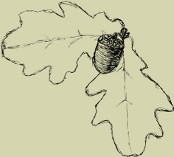42 41 40 39 38 37 36 35 34 33 32 31 30 29 28 27 26 25 24 23 22 21 20 19 18 17 16 15 14 13 12 11 10 9 8 7 6 5 4 3 2 1
Issue 21 (1990)
In the second part of paper there are presented results of investigations on the carbonizates activation obtained from tree barks hydrolyzed with the use of water and 0.5% sulfuric acid in industrial conditions. There was performed series of activations in following technological: 1; 1.5; 2 and hours amount of the activating factor 2 g of H2O/1 g of carbon. The material balance of process was made and basic properties were determined.
On the basis of carbonizates and active carbons properties and calculates total effective burning down coefficients and burning down speed there was presented course of burning down carbonizates from hydrolyzed barks and most favorable in its parameters. It was found that effective burning down is most favorable in the 1120 K temperature.
The samples of aged urea glue resins U-70 were exposed to ultrasounds from UDM-10 desintegrator working at frequency of 21 kHz. The exposure to ultrasounds was carried out with various amplitude of vibration (10, 20, 30 µm). The time of exposure was 5 and 30 min. Investigations on some rheological properties of resin exposed to ultrasounds were carried out by rotary viscometer Rheotest-2. Experimental data were analyzed according to Schulman's model.
In the conclusion it was ascertained that aged resins U-70 as well as regenerated resins (amplitude of vibration — 10 µm) represent rheostatic type of fluids with flow limit. Resins regenerated with amplitude of vibration 20 µm as well as 30 µm represent pseudoplastic fluids.
Water extracts from oak bark, oak chips and spruce needles are prepared by one hour extraction at temperatures between 100 and 180°C. After having prepared extract solutions of 20, 30 and 40% concentration, beech and pine samples were impregnated and finally dried stepwise while shrinkage was measured. The effect of extraction temperature is nearly constant for spruce needles while oak bark is sensitive with optimal conditions at 170 and 180°C. The anti-shrink efficiency is depending on the amount of extract deposited within the cell walls which is influenced by the molecular sizes of the extract components. The efficiency E (g/m3%) of the extract is a measure for its ability to penetrate into the cell walls and to substitute the sorption water.
A modeling of the rheological behavior of wood modified with polymers performed in the work was based on a conception of molecular and relaxative conditioning the viscoelastic properties of a polymer material. The kernel functions for composite integral state equations were considered as resulting form the adequate functions known for the individual components of the composite. The obtained exact solutions have taken the simplest form of the linear equations superposition for the stress relaxation function of the composite deformed along the fibres. More complicated form take the creep functions resulting from the deformation state equations which are not analytically integrable, in general. For the homopolymerous systems. like the wood-polystyrene composite investigated in normal, unchanging conditions elastic and inelastic properties could be predicted unambiguously.
A comparative study on decay resistance of pine poles treated with styrene and with copper-chrome-arsenic salt (CCA) by laboratory and field tests was carried out.
One of imidazol derivatives, well known from its activity against soft-, white- and brown-rot fungi, was studied with the use of fungi causing sap-stain in Scots pine wood. For comparative purposes sodium pentachlorophenoxide was used.
In the paper a computer system for optimizing cutting of chipboard is described. This system is designed for furniture factories with regard to production and organization restriction. The criterium of the optimization is maximum utilization of the chipboard. Minimum computer system requirement are: IBM AT (or compatible), 640 KB of RAM, hard disk (20 MB) and a printer.
Investigations were carried out to determine effect of selected fillers of urea adhesives on blunting of tools during drilling and to suggest a method for model measurements. The conditions for obtaining hardened castings from U-70 resin, MZ hardener and fillers: anhydrite meal, beech meal and rye flour were worked out. Screw boring bit with cylindrical holder was used for drilling. The degree of blunting of the bit butters was assessed by copying the edges on tracing paper applied to light display of workshop microscope.
The results of the investigations indicate that the greatest blunting effect appears in case of drilling the castings of hardened U-70 area resin without fillers. Addition of fillers to glues decreases the blunting effect on drilling bits. Blunting of cutter edges is related to hardness and density of hardened condensates.
The variability of dimensions and spacing of narrow and broad oak tree rays depending on the ray and height of trees in different biosocial classes were investigated. The variability of height of both narrow and broad rays is great. The variability of width of the tree rays is considerably smaller. There is a linear relation between the height of narrow rays and the number of constituting cells. The number of the narrow rays decreases with the distance from core along exponential curve. The number of the broad rays along the ray remains practically unchanged. With lowering of biosocial class of trees there is a tendency to, among others, decrease, the height and the number of the narrow rays and to increase the height of the broad ones.















 Download PDF
Download PDF